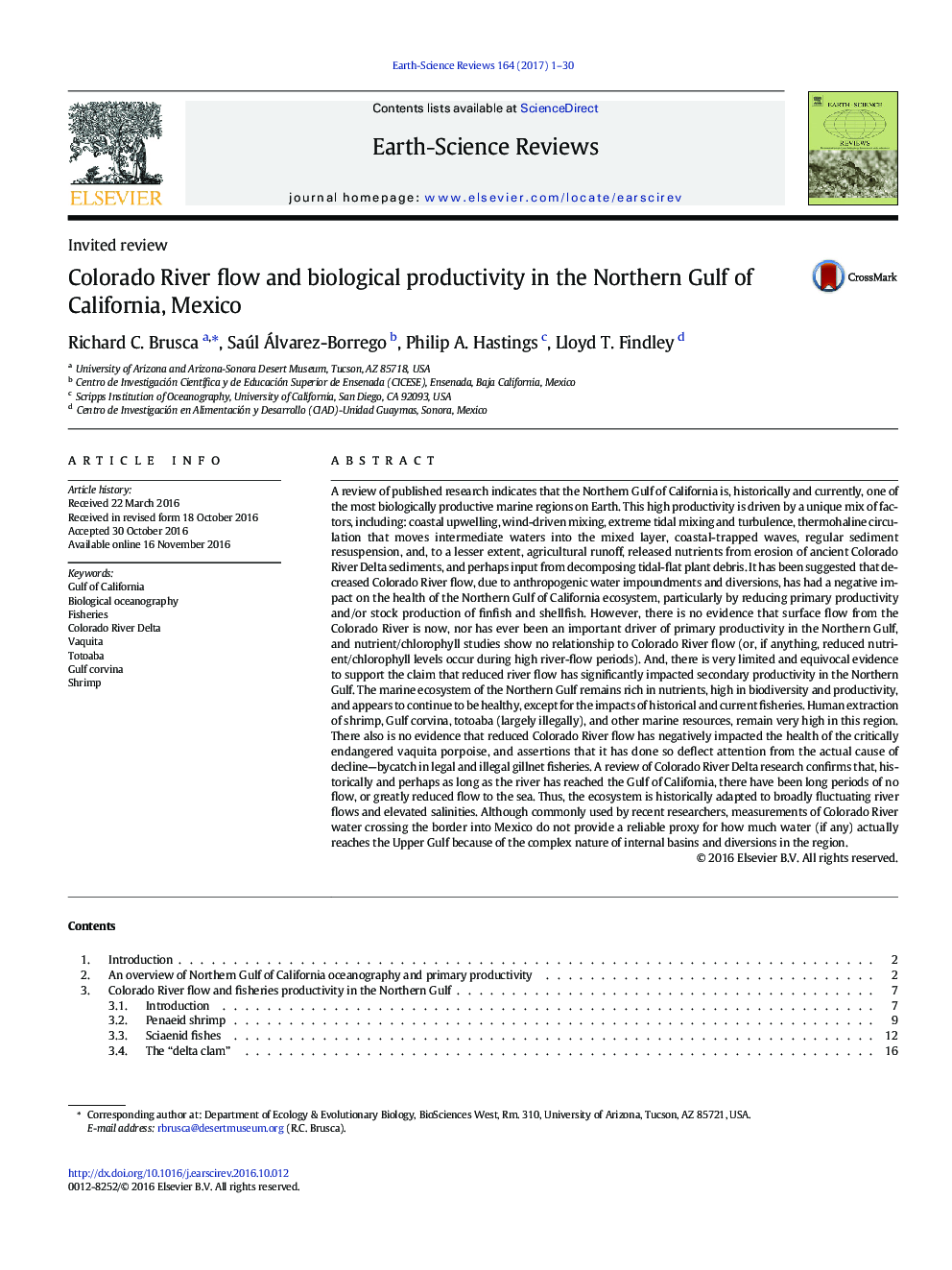| کد مقاله | کد نشریه | سال انتشار | مقاله انگلیسی | نسخه تمام متن |
|---|---|---|---|---|
| 5785181 | 1639938 | 2017 | 30 صفحه PDF | دانلود رایگان |
A review of published research indicates that the Northern Gulf of California is, historically and currently, one of the most biologically productive marine regions on Earth. This high productivity is driven by a unique mix of factors, including: coastal upwelling, wind-driven mixing, extreme tidal mixing and turbulence, thermohaline circulation that moves intermediate waters into the mixed layer, coastal-trapped waves, regular sediment resuspension, and, to a lesser extent, agricultural runoff, released nutrients from erosion of ancient Colorado River Delta sediments, and perhaps input from decomposing tidal-flat plant debris. It has been suggested that decreased Colorado River flow, due to anthropogenic water impoundments and diversions, has had a negative impact on the health of the Northern Gulf of California ecosystem, particularly by reducing primary productivity and/or stock production of finfish and shellfish. However, there is no evidence that surface flow from the Colorado River is now, nor has ever been an important driver of primary productivity in the Northern Gulf, and nutrient/chlorophyll studies show no relationship to Colorado River flow (or, if anything, reduced nutrient/chlorophyll levels occur during high river-flow periods). And, there is very limited and equivocal evidence to support the claim that reduced river flow has significantly impacted secondary productivity in the Northern Gulf. The marine ecosystem of the Northern Gulf remains rich in nutrients, high in biodiversity and productivity, and appears to continue to be healthy, except for the impacts of historical and current fisheries. Human extraction of shrimp, Gulf corvina, totoaba (largely illegally), and other marine resources, remain very high in this region. There also is no evidence that reduced Colorado River flow has negatively impacted the health of the critically endangered vaquita porpoise, and assertions that it has done so deflect attention from the actual cause of decline-bycatch in legal and illegal gillnet fisheries. A review of Colorado River Delta research confirms that, historically and perhaps as long as the river has reached the Gulf of California, there have been long periods of no flow, or greatly reduced flow to the sea. Thus, the ecosystem is historically adapted to broadly fluctuating river flows and elevated salinities. Although commonly used by recent researchers, measurements of Colorado River water crossing the border into Mexico do not provide a reliable proxy for how much water (if any) actually reaches the Upper Gulf because of the complex nature of internal basins and diversions in the region.
Journal: Earth-Science Reviews - Volume 164, January 2017, Pages 1-30
